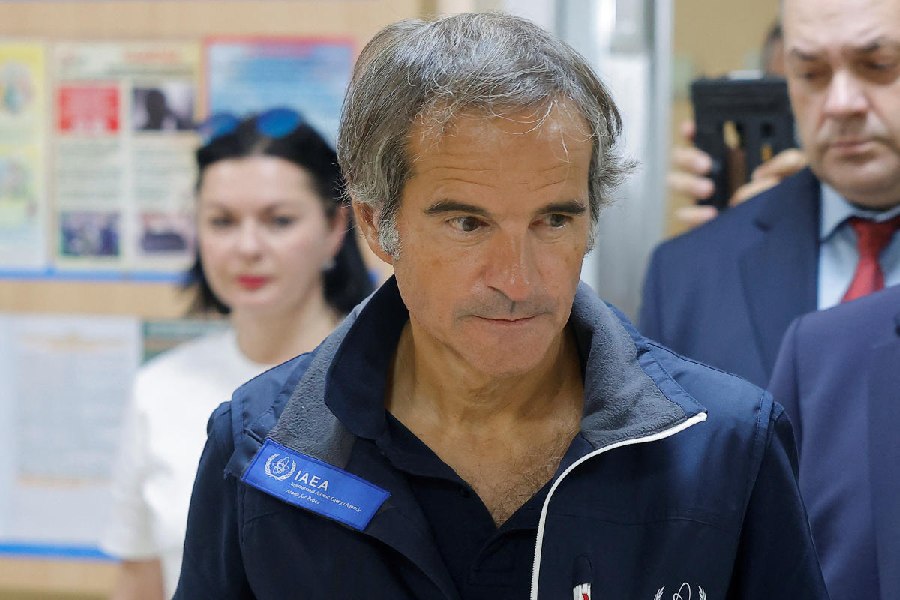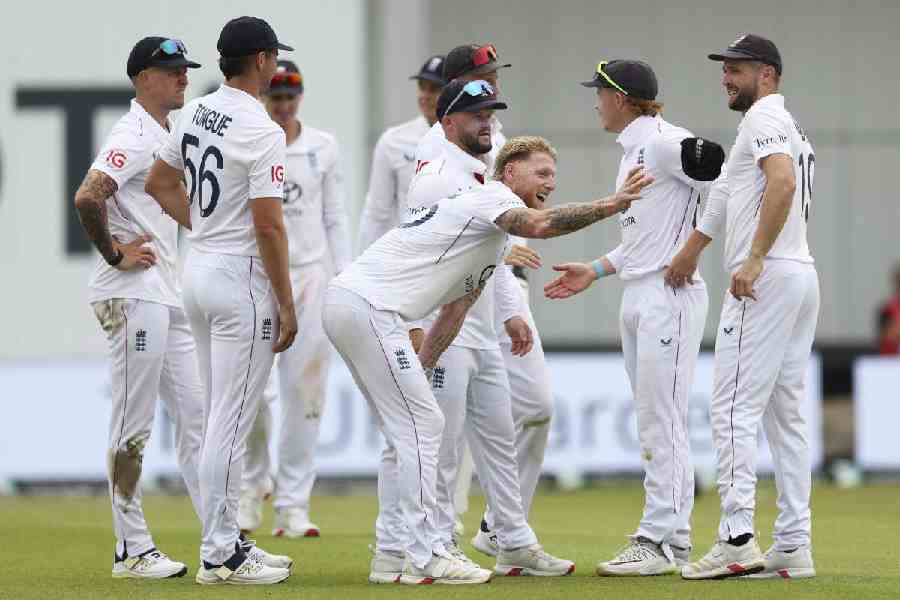 |
There is a prominent leader of the Bharatiya Janata Party who is unduly partial to astrology and astrologers. For some time now, this gentleman stubbornly maintained that regardless of everything, the constellation of stars and planets would not augur well for the BJP till September 2006. However, things would start improving from November 2006 and after mid-2007, the party’s ascent will be dramatic and unstoppable.
The suggestion that decision-making in public life should be dictated by the almanac sounds preposterous, laughable and very Indian. Yet, observing the National Council of the BJP last week at Lucknow, I could not be struck by the remarkable prescience of astrology in anticipating the fortunes, in the short-term at least, of the BJP.
For nearly 30 months, from the tail-end of the 2004 general election campaign, the BJP as a national party seemed almost incapable of doing anything right. Its leaders got themselves mired in the unlikeliest of controversies and scandals; its suraksha yatra and umpteen “nationwide” agitations fell flat; its parliamentary interventions were infantile and ineffective. For much of this year, while secular activists confronted their own impending redundancy, the chattering classes began penning the BJP’s obituary. Hindu nationalism, we were informed by those whose judgments matter in the right places, was just an ephemeral blip in the radar of history. By the third quarter of 2006, it was conventional wisdom in ‘respectable’ circles that the BJP’s return to the fringes was inevitable. “The right wing will persist but it’s all over for the BJP,” a CPI(M) politburo member pronounced sombrely at a dinner around Diwali. The select gathering of the Delhi Establishment nodded in agreement.
Going by the logic of atrophy and collapse, the gathering in Lucknow should have been a wake of the dispirited faithful. Instead, what became apparent by the first day was that there was quite a lot of bounce left in the BJP yet. The former Uttar Pradesh chief minister, Kalyan Singh (always a useful barometer of the party’s mood) was, to use a colloquialism from Varanasi, absolutely bom-bom. He delivered a speech which could best be described as maximalist Hindutva, aimed exclusively at the party cadre. It was quite a contrast from his resigned expression in Mumbai last December when he was put in overall charge of the Uttar Pradesh campaign.
Just a year ago, the BJP was facing extinction in Uttar Pradesh. The gallows humour centred on whether it would take fourth place or be overtaken by the slippery Ajit Singh’s outfit. Today, after the municipal polls, which saw BJP candidates winning eight of the 11 mayoral contests in the big towns, the mood is wildly upbeat. The staggeringly large crowd which turned out for the Lucknow public meeting on December 24 didn’t convey the impression of being mourners.
Given the psephological pitfalls of predicting triangular and quadrangular contests in Uttar Pradesh, few are willing to guess the outcome of the assembly election due in early-2007. All that can be said is that the BJP is back in the race and is certain to give tough competition to both the Samajwadi Party and the Bahujan Samaj Party. Particularly reassuring for the BJP are indications that the upper-caste Hindu vote, which seemed to be drifting away to the Samajwadi Party, the Congress and even the BSP, may yet remain loyal. If, in addition to the Brahmins, Thakurs and Banias, the BJP is able to claw back the backward castes which deserted it in 2002, there is a good chance of Kalyan Singh playing his third innings as chief minister.
The revival of the BJP in Uttar Pradesh is symptomatic of the party’s recovery of self-confidence nationally. The party which had been remarkably accident prone in parliament — remember the disastrous monsoon session of 2006 where it went off on a furtive mole hunt — managed to survive the winter session without scoring any self-goals. Outside parliament, it was able to capitalize on the United Progressive Alliance government’s embarrassment over the death sentence awarded to Afzal Guru, one of the conspirators in the 2001 attack on parliament. Plus, the party was the natural beneficiary of the competitive tear-jerking among secularists in the wake of the Rajinder Sachar committee report on the condition of Muslims.
The Sachar report and the heat generated by Afzal’s death sentence were classic examples of the government miscalculating out of over-confidence. Once the belief that the BJP was in terminal crisis — and thriving only in Gujarat — had entered the bloodstream of the Congress, Manmohan Singh’s government proceeded on the assumption that this was the time to aggressively court the Muslim community via the well-trodden route of identity politics. Since the Muslim vote was already in its kitty in much of India, the move was primarily aimed at crippling Mulayam Singh Yadav in Uttar Pradesh.
Predictably, the government overplayed its hand. The Congress was never in any position to benefit politically from the expansion in reservation for the other backward classes in education. However, its move triggered a massive disquiet among urban and upper-caste Hindus. They revived their interest in the BJP as an instrument of protest.
The Muslim reservations issue — calculated to be emotive in view of the bitter pre-Independence experience with communal quotas — gave the BJP the necessary political opening to mount an assault on the UPA, something it could never have done on the OBC reservations issue. The government’s ambivalence on Afzal’s hanging, its naïve articulation of the joint terror mechanism with Pakistan, and its colossal mismanagement of the jihadi delivered to the BJP a bouquet of issues to resuscitate the latent anger against Muslim appeasement.
For the moment, the BJP has been presented with issues which could potentially consolidate a dissipated Hindu vote. To this can be added the social tensions generated by the escalating crisis in agriculture and the discontent of those who believe they have not benefited from the post-liberalization boom. In a curious sort of way, the UPA government may well be facing the very same problems which led to the BJP’s unexpected defeat in 2004. Like the Congress, which took advantage of the creeping anti-incumbency without having to take any programmatic initiatives, the BJP just has to keep chipping away at the government without having to be bothered about either consistency or history. Thus, it can repay the Congress for its post-Pokhran-II cussedness by being bloody-minded about the Indo-US nuclear understanding. It can also do to the West Bengal government in Singur what the left-Medha Patkar combination did to the Gujarat government over Narmada.
Between 1991 and 1996, the BJP broke the mould by espousing an alternative vision of India. Today’s BJP is, of course, repeating some of those old formulations before a generation to whom Ayodhya is history. Its main thrust, however, is to fulfil the primary role of the Opposition in a parliamentary democracy — to oppose for its own sake. Fortunately for it, the broad themes of opposition is music to its committed following and the ideological ombudsmen in Nagpur.
In politics, there is nothing like frenzied activity to distract attention from internal problems. The BJP has a host of unresolved issues which has been agitating its natural supporters — the leadership question being paramount. The government’s mid-term mishaps have provided a convenient diversion from questions that warrant introspection and debate to campaigns that demand sloganeering. If the ever-growing whisper today—the media is always late to pick up the buzz—is that the National Democratic Alliance could be back in 2009, it is because the BJP is playing by the well-crafted rules of expediency. Maybe that’s what the astrologers deemed all along.










